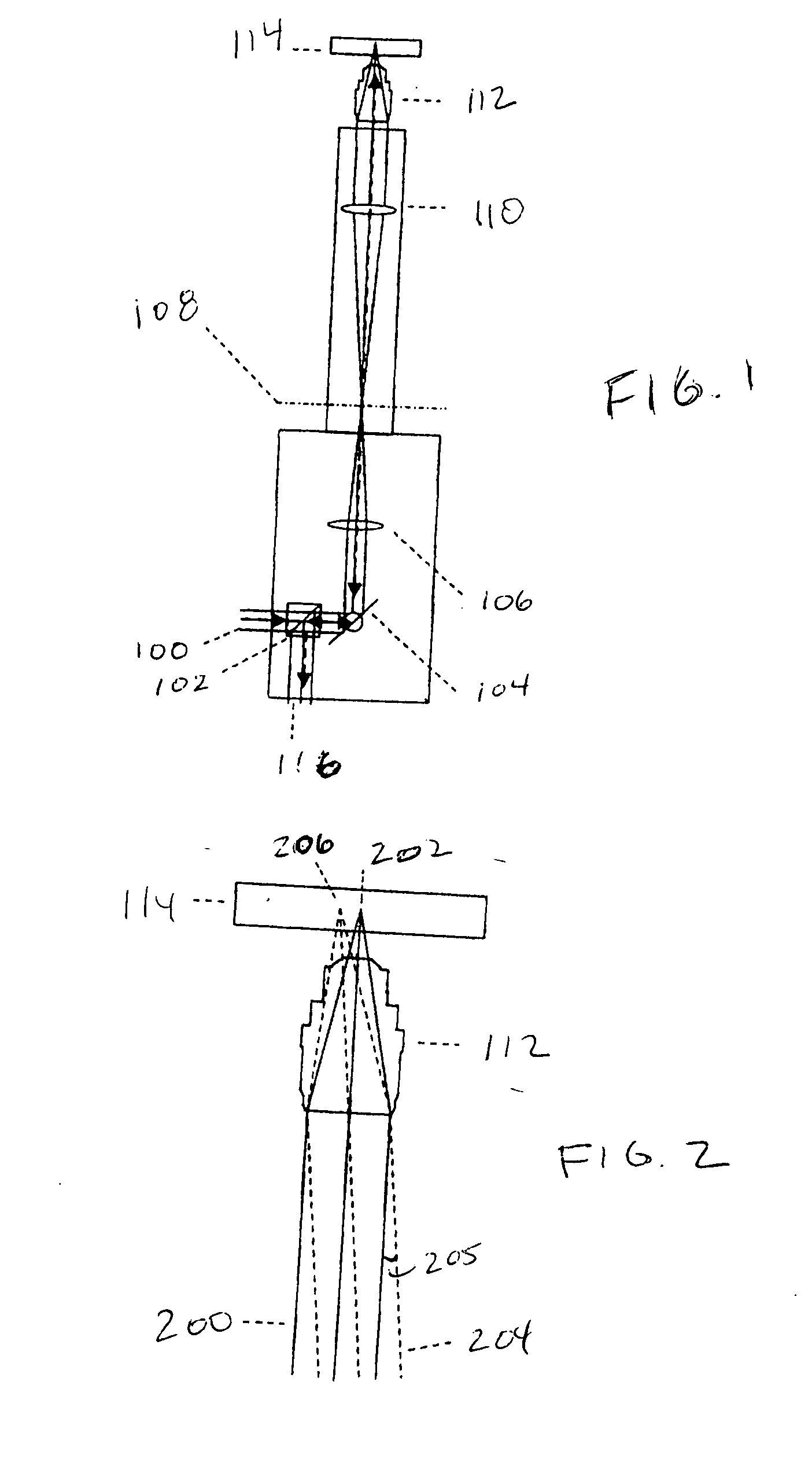Scanning optical system
a scanning optical system and optical technology, applied in the field of optical microscopy, can solve the problems of optical resolution improvement that cannot be achieved by this method, imaging/probing system, restricted wavelength, etc., to prolong the useful life of traditional imaging components, improve imaging speed, and reduce cost
- Summary
- Abstract
- Description
- Claims
- Application Information
AI Technical Summary
Benefits of technology
Problems solved by technology
Method used
Image
Examples
Embodiment Construction
FIG. 1 illustrates the optical path of a conventional Laser Scanning Microscope (LSM), an example of which is the LSM-1064 manufactured by Checkpoint Technologies. Incident, collimated light 100 from a laser source (which may be delivered from a fiber+fiber collimator) impinges on beamsplitter 102, which is used to separate incident light from reflected light. Beamsplitter 102 may be a polarizing beamsplitter used in conjunction with a quarter-wave plate to improve transmission efficiency. Light 100 impinges on galvo-mirrors 104, which are rotated to generate a raster scan pattern of the light beam incident on a sample. Generally, two galvo-mirrors are used, one for x-scan and another for y-scan. There are alternative means for generating a raster scan pattern, such as acousto-optic crystals, or tip-tilt piezo scanners. These methods are described in Corle, T. R. and G. S. Kino, Confocal Scanning Optical Microscopy and Related Imaging Systems. 1996, San Diego: Academic Press, which ...
PUM
 Login to View More
Login to View More Abstract
Description
Claims
Application Information
 Login to View More
Login to View More - R&D
- Intellectual Property
- Life Sciences
- Materials
- Tech Scout
- Unparalleled Data Quality
- Higher Quality Content
- 60% Fewer Hallucinations
Browse by: Latest US Patents, China's latest patents, Technical Efficacy Thesaurus, Application Domain, Technology Topic, Popular Technical Reports.
© 2025 PatSnap. All rights reserved.Legal|Privacy policy|Modern Slavery Act Transparency Statement|Sitemap|About US| Contact US: help@patsnap.com



